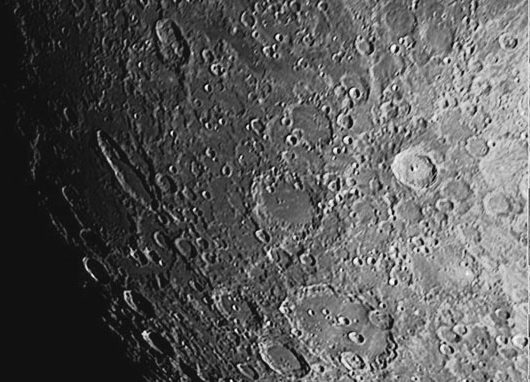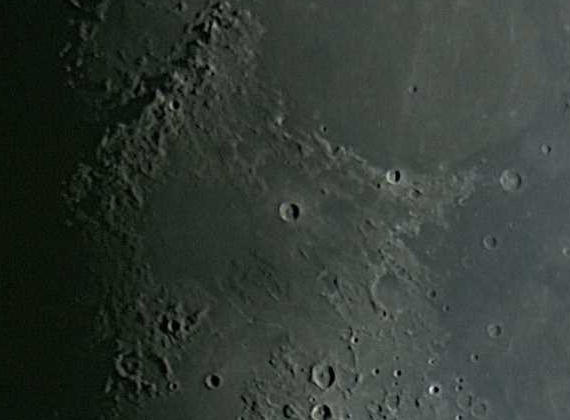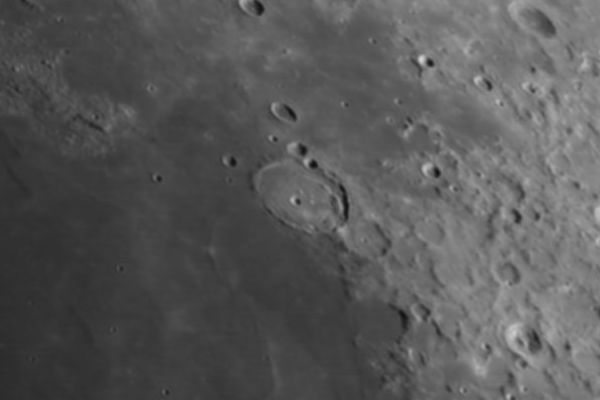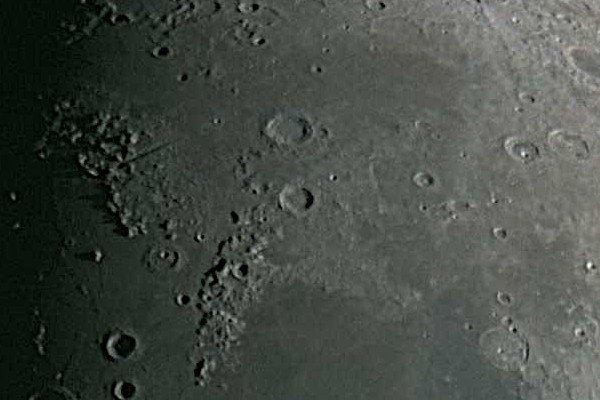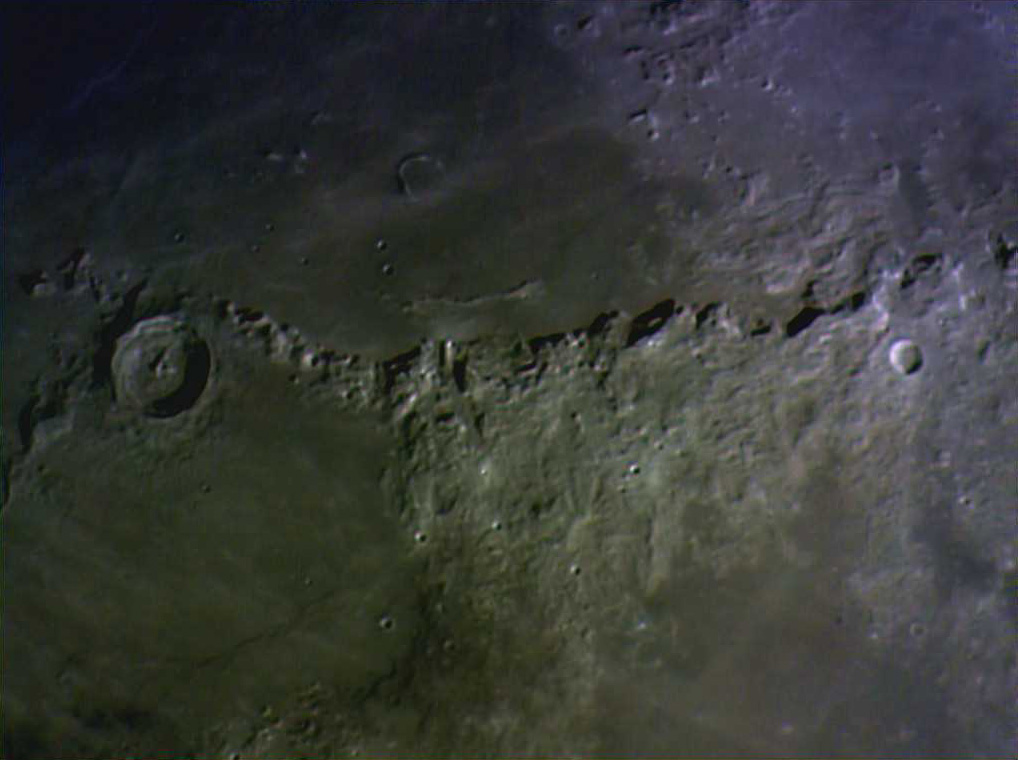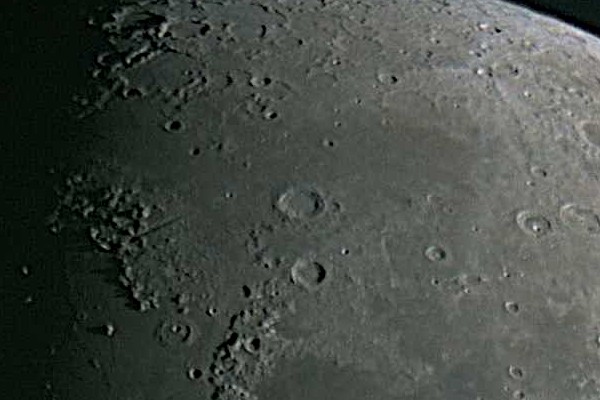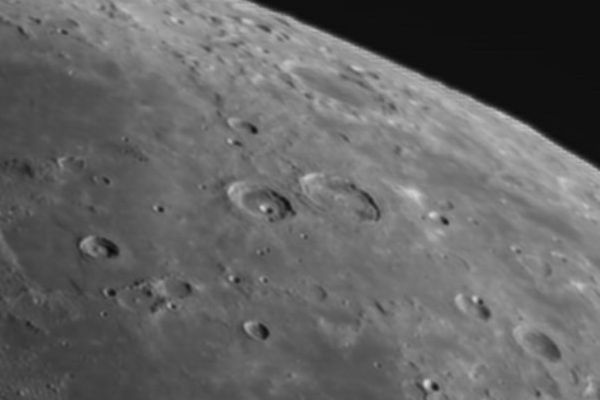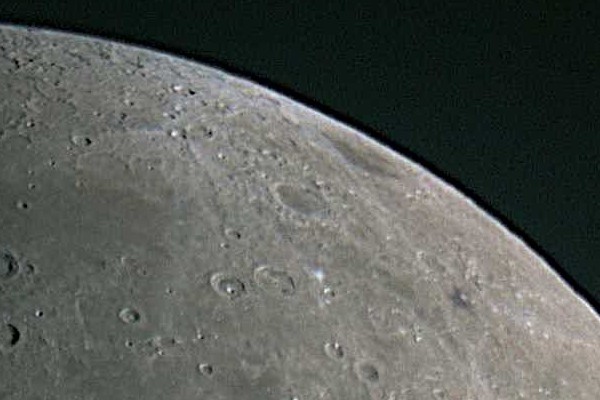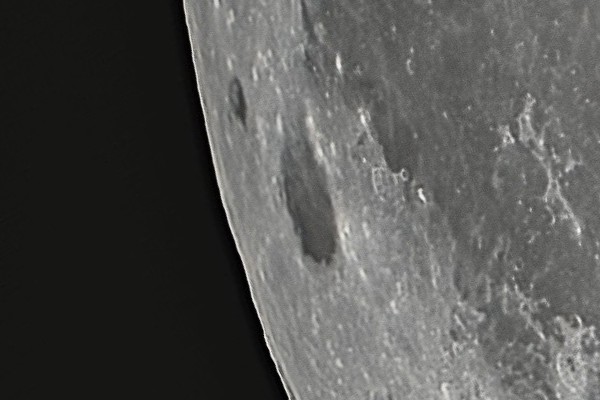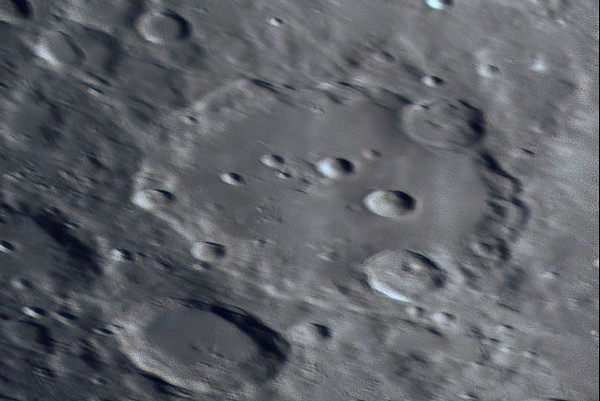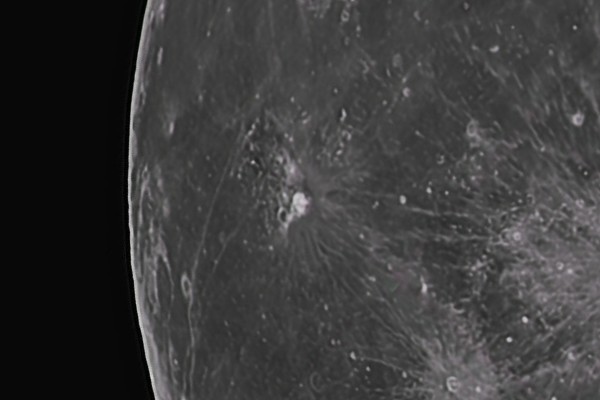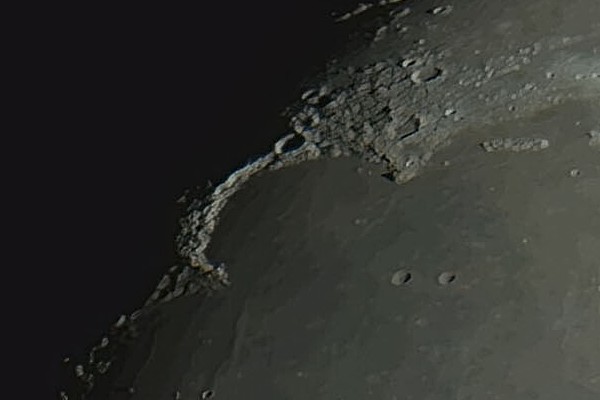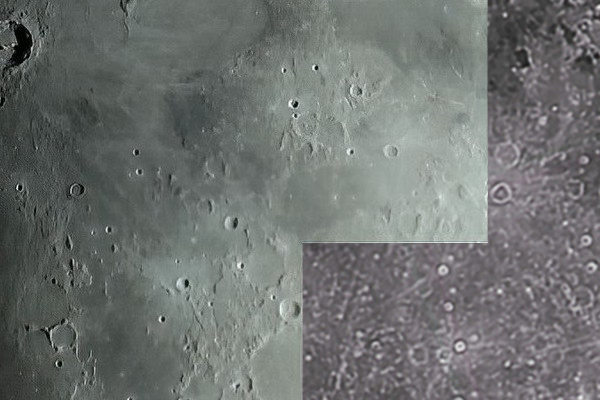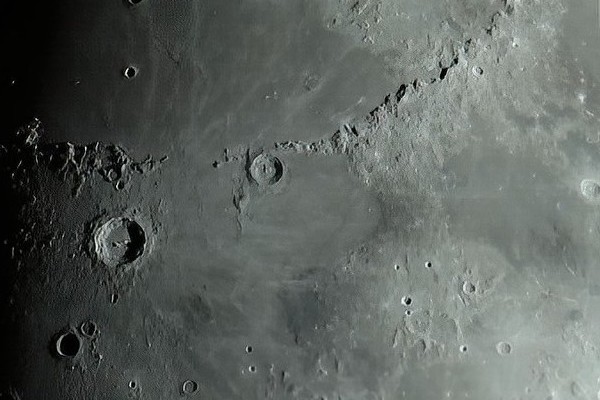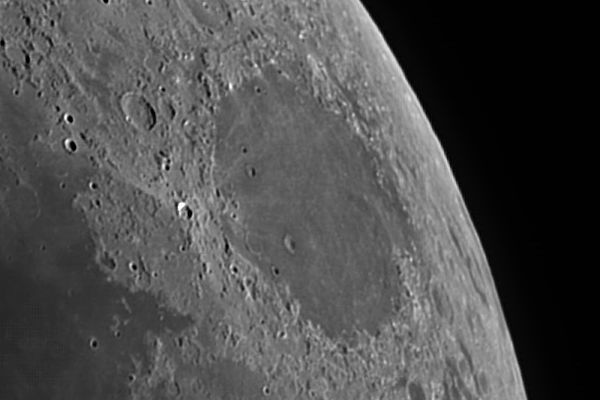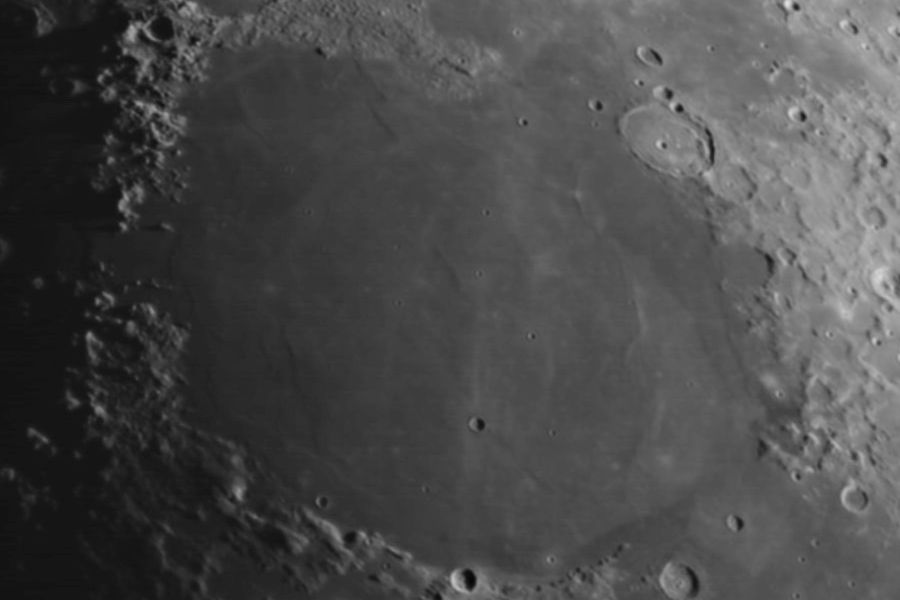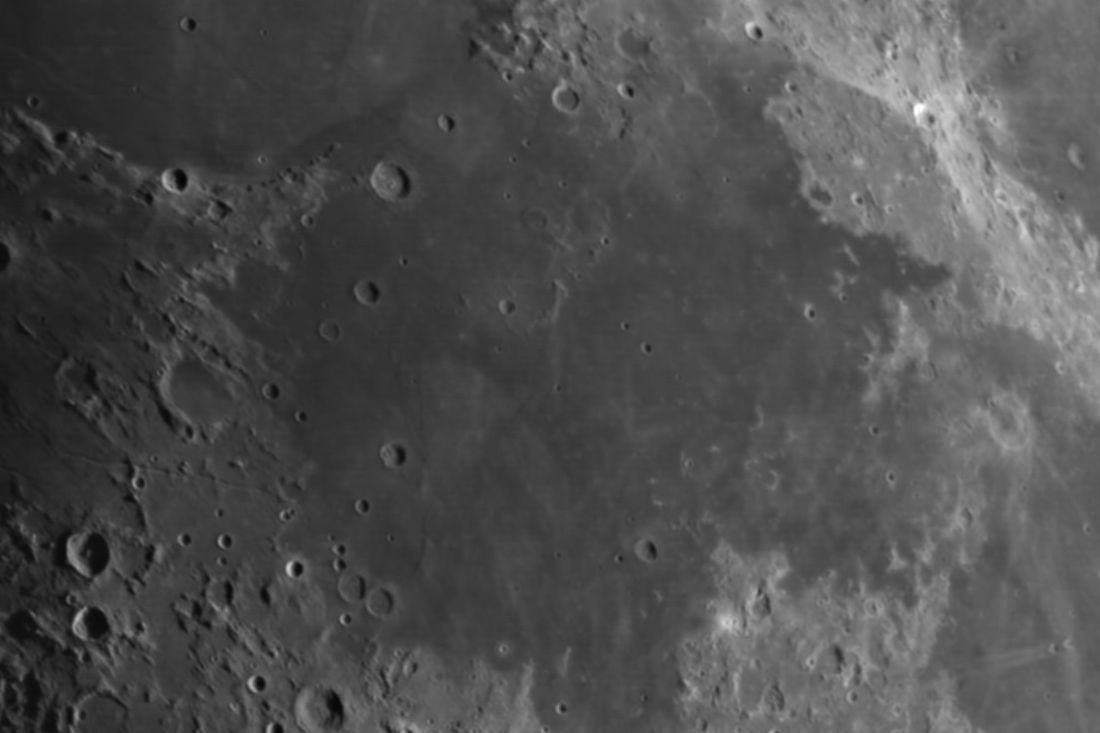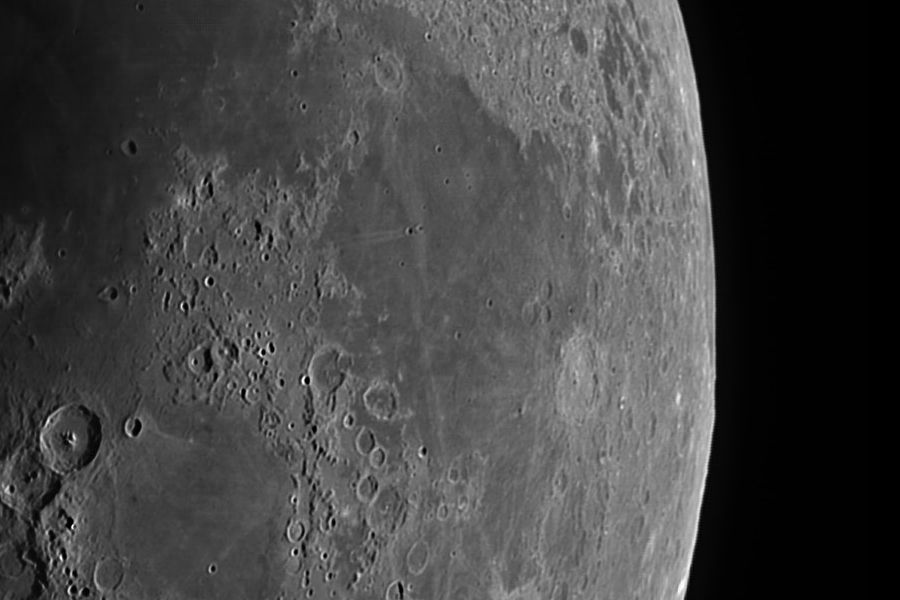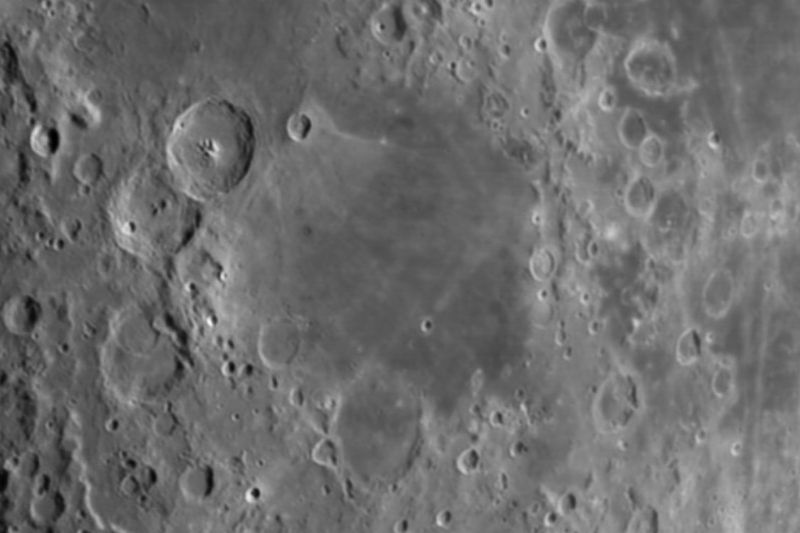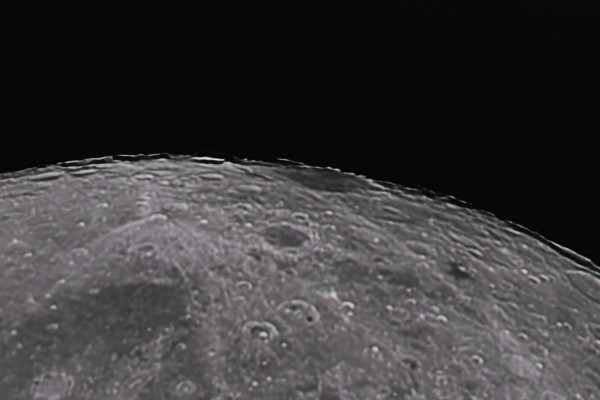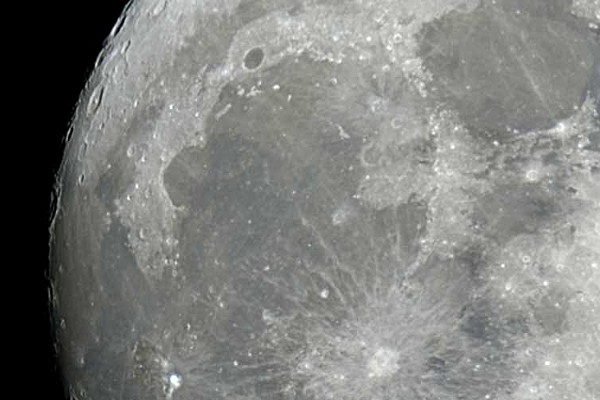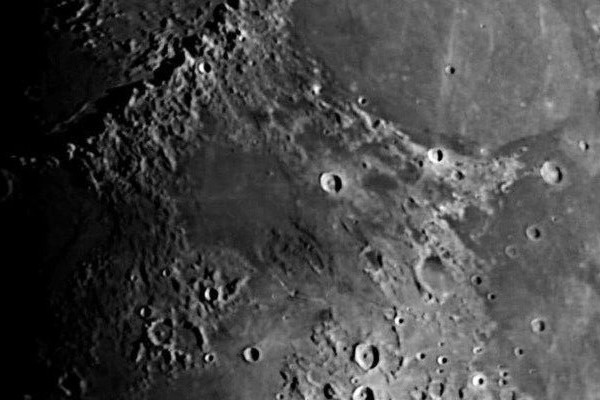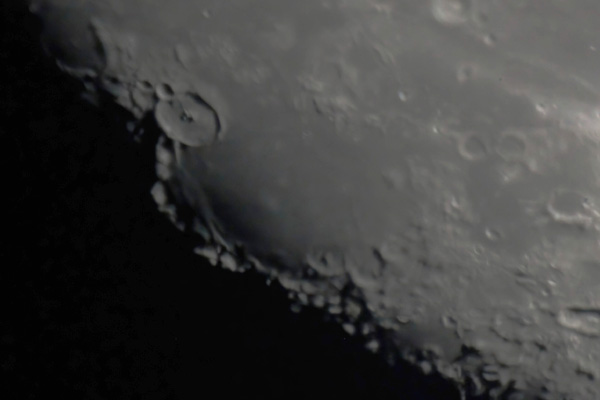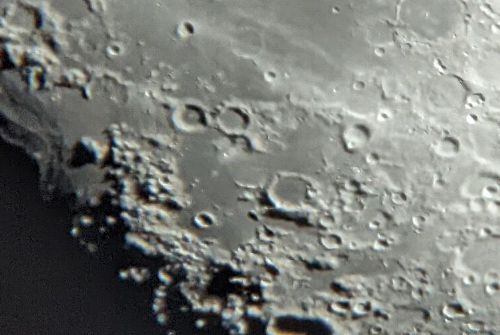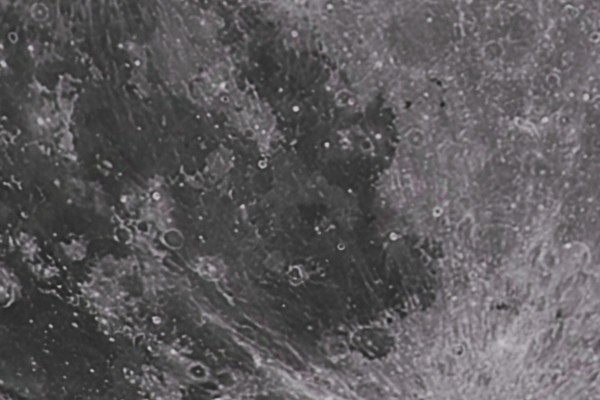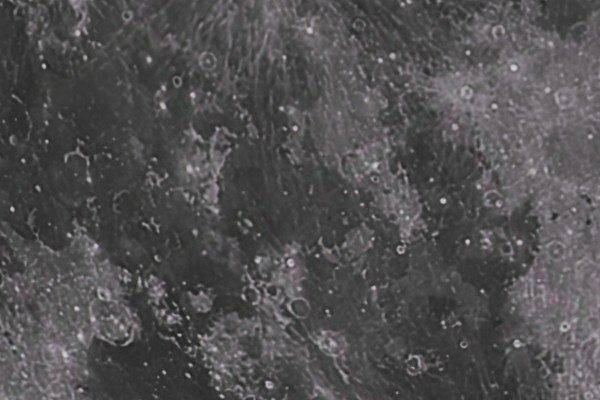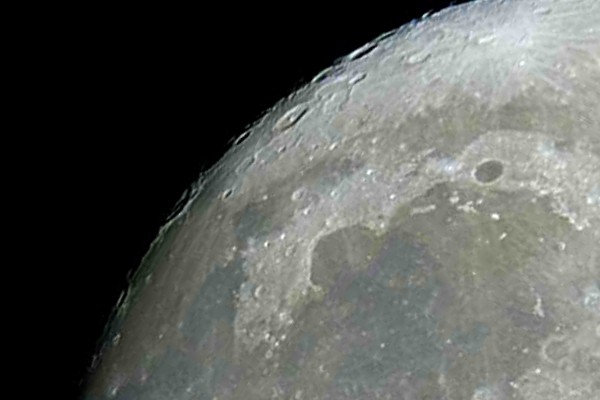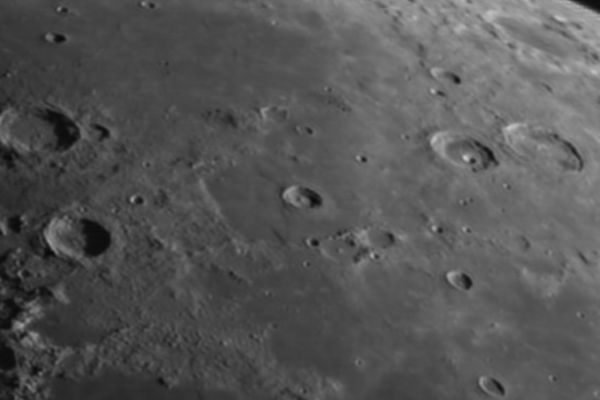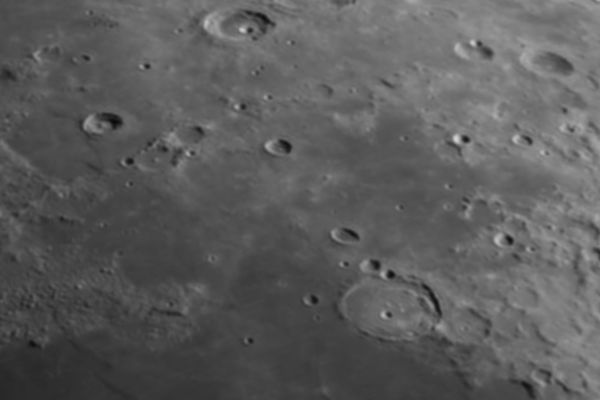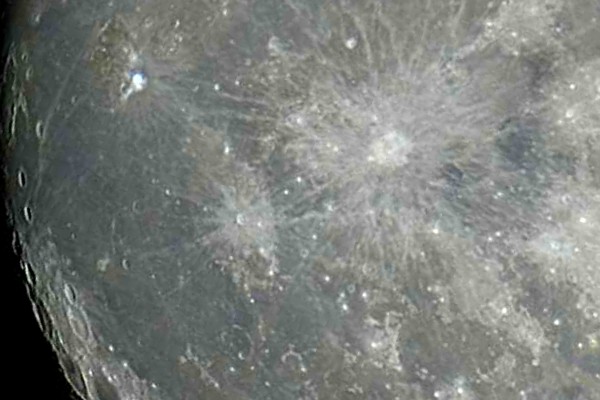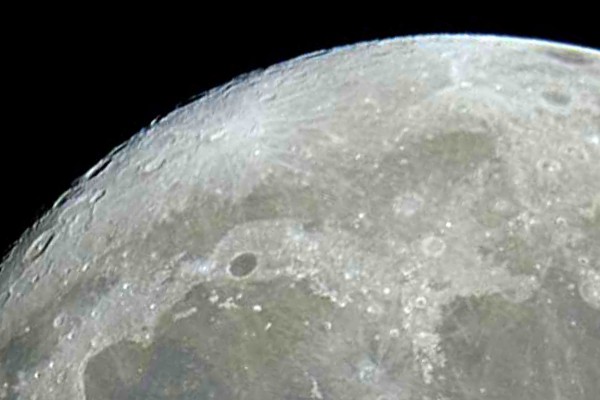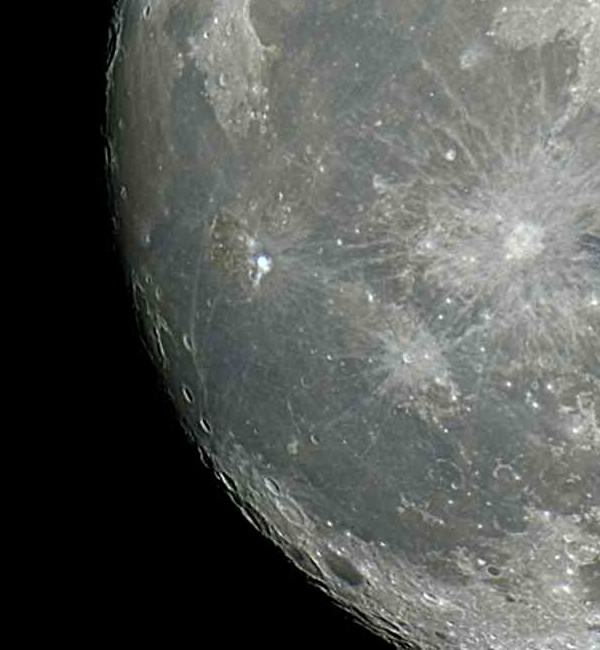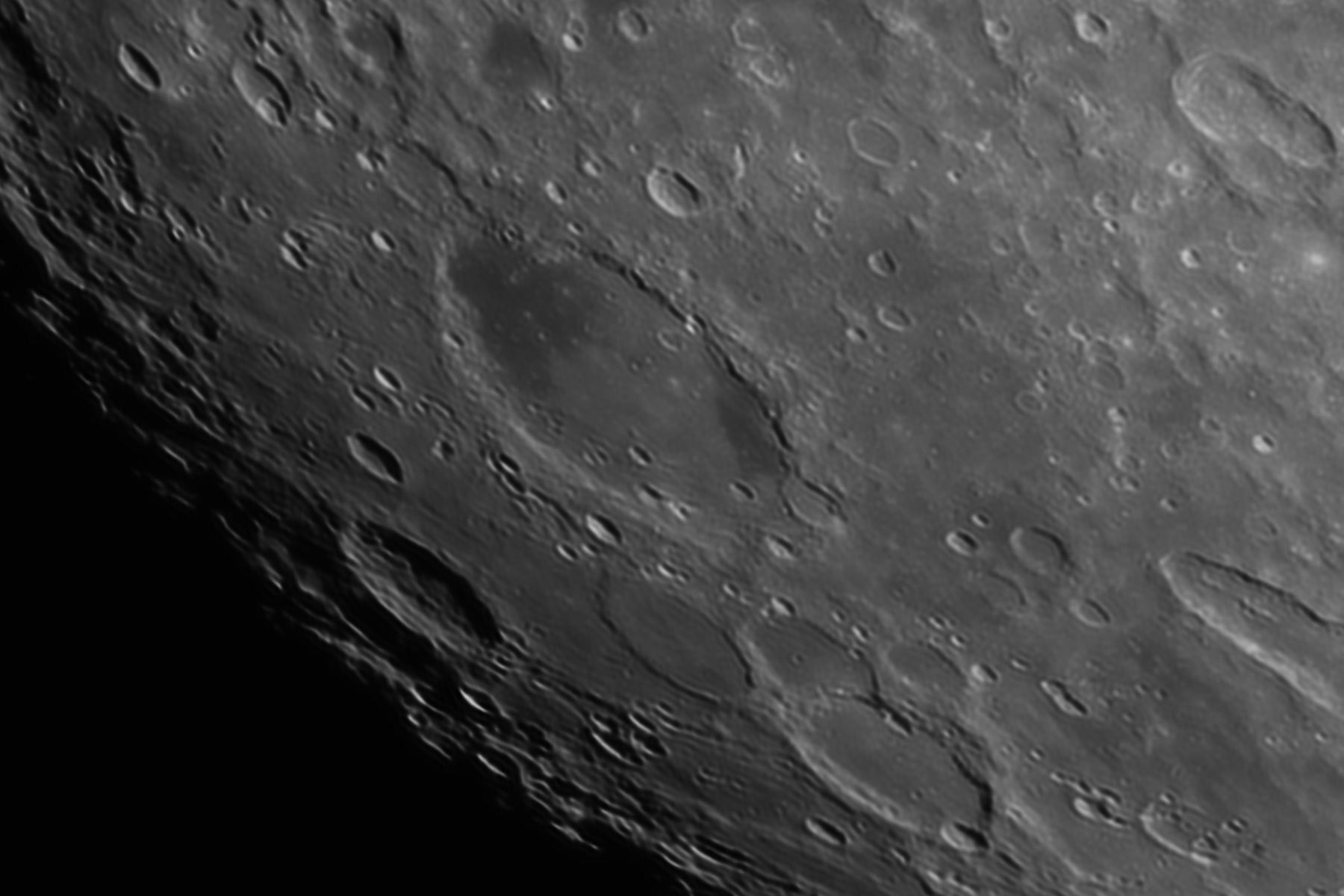Moon
When viewing the moon it usually appears colourless, but by adjusting the colour saturation in processing, it is possible to bring out the colour details which our eyes are otherwise not sensitive enough to see. Click on the 'Mineral View' button to display James Clark's tremendous mineral image.
Move your mouse over the Moon, to identify the main features & click to display further information.
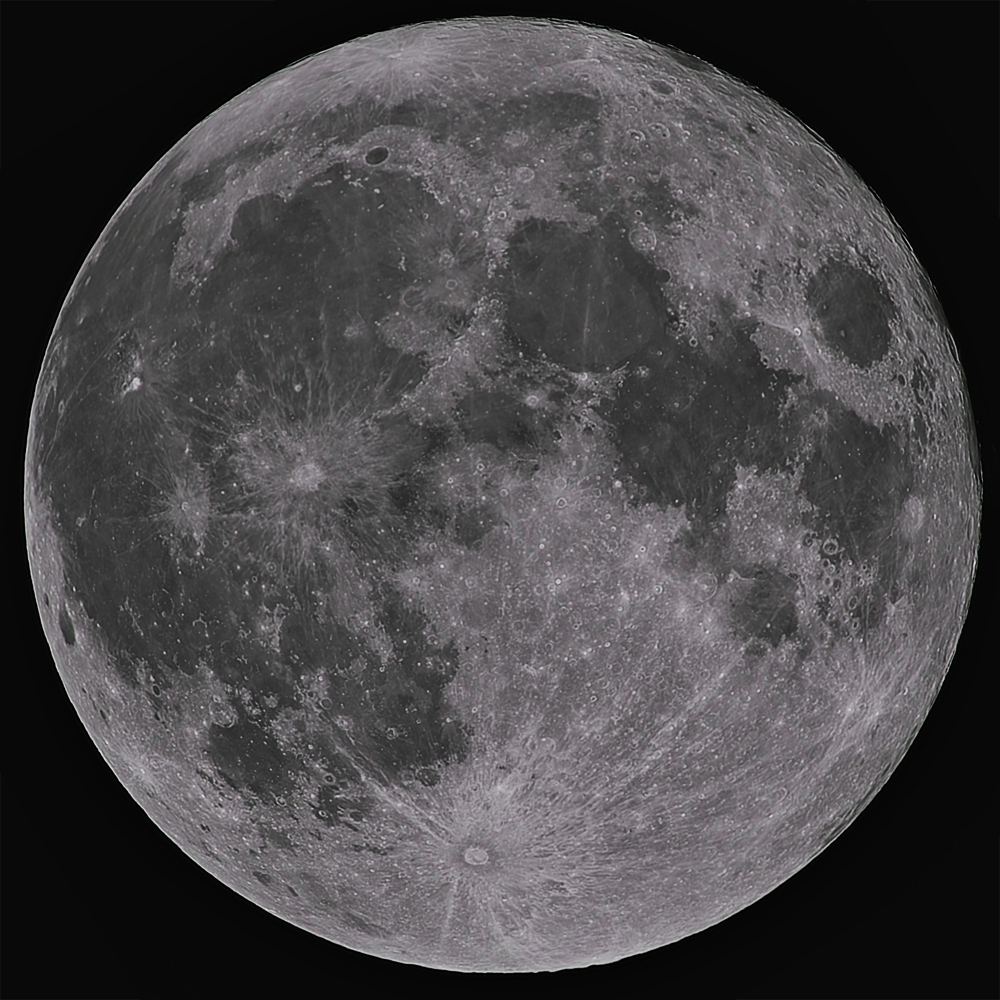
The Moon is thought to have formed about 4.5 billion years ago. Extensive meteoric bombardment created large basins, hundreds of kilometers across, and resulted in the melting and chemical separation of the surface. About 4 billion years ago the bombardment eased & the residual heat (together with heat from radioactive elements) resulted in melting of the surface down to depth of 200km.
Lava from the resulting volcanic activity then rose and filled the basins, with basalt rock forming in the dark flat-ish areas called maria (or 'seas'). Subsequently, over the last 3 billion years, the lunar surface has only been altered by crater impacts & the occasional Earth space mission.
Over the last 3 billion years the large meteor impacts have helped spread & mix material around on the surface, and together with the large number of small meteorites, have created a lunar soil called 'regolith'. This is a mixture of powdered rock and rubble which varies from 1 to 20m deep.
The Moon's highland features age between 3.8 to 4.48 billion years. The maria rocks, aged 3.1 to 3.8 billion years, have more titanium, magnesium and iron, giving them either a blue-ish or rusty appearance. These are the youngest rocks on the Moon but were formed at around the same time as the oldest surviving rocks on Earth.
